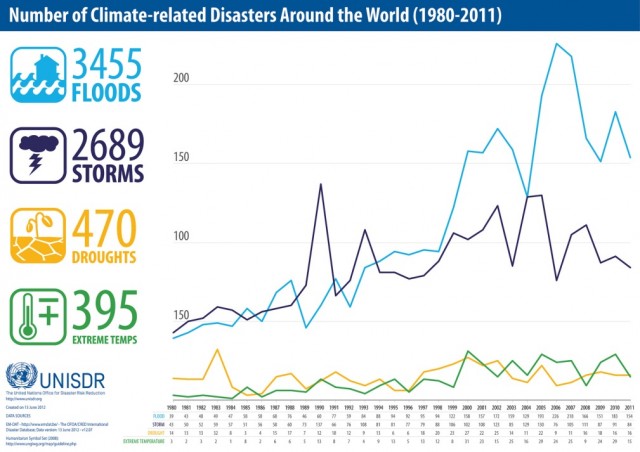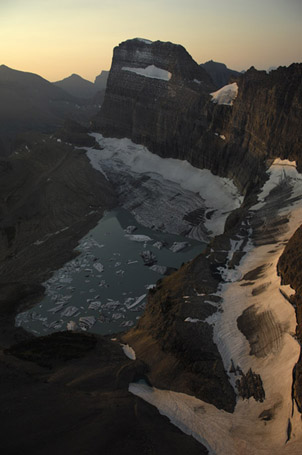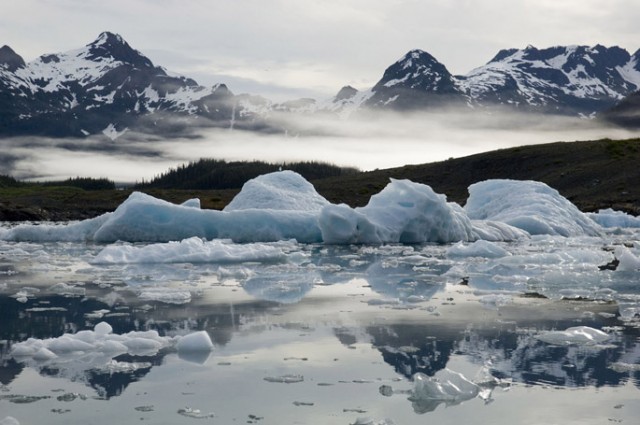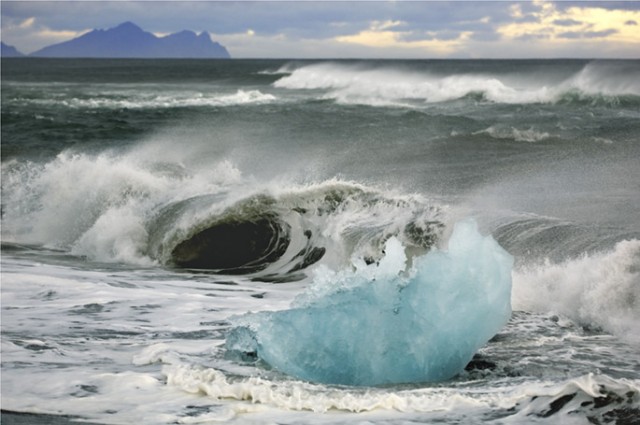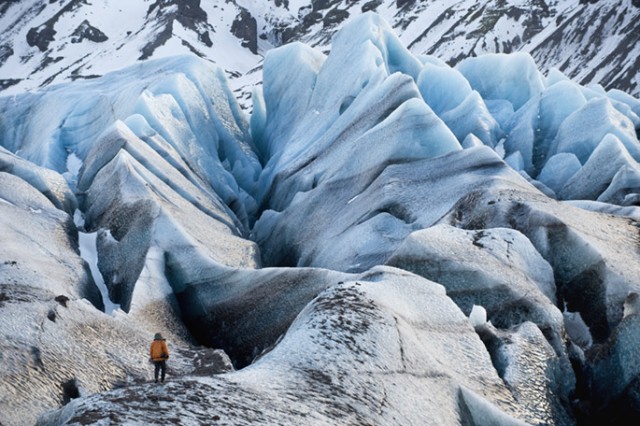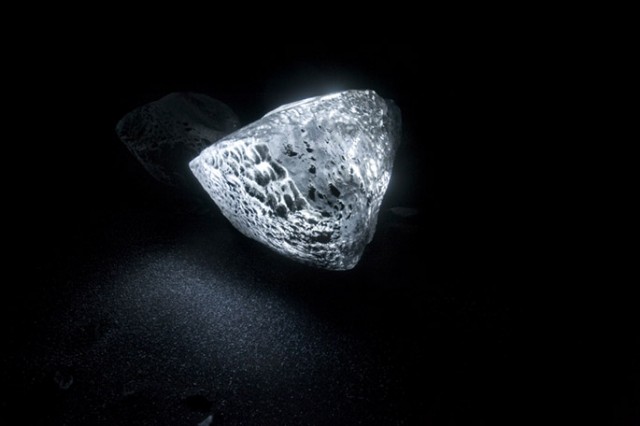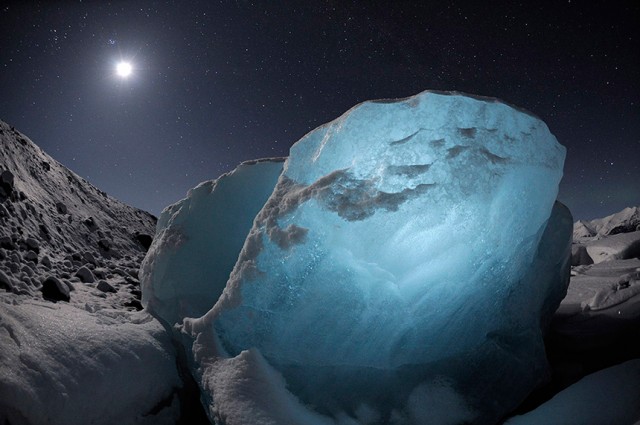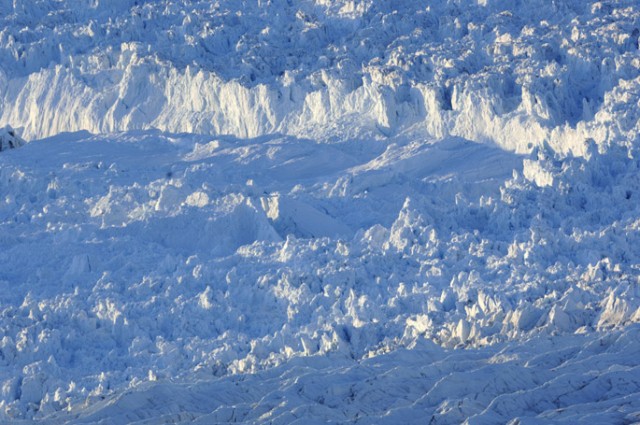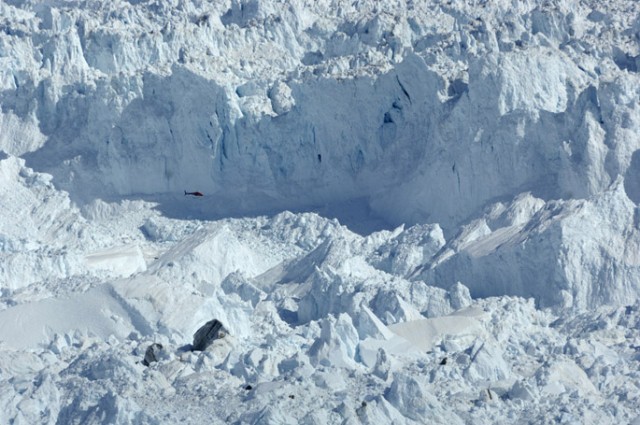 Many public figures in the U.S., among them senators and Congressional representatives, still question and dismiss the human influence on climate, twenty-seven years after the first Congressional hearing on the subject.
Many public figures in the U.S., among them senators and Congressional representatives, still question and dismiss the human influence on climate, twenty-seven years after the first Congressional hearing on the subject.
Without a coherent national policy, portions of the public also remain unwilling to acknowledge climate change claims supported through scientific data. As filmmaker James Balog explains, “…the public doesn’t want to hear about more statistical studies, more computer models, more projections. What they need is a believable, understandable piece of visual evidence; something that grabs them in the gut.”
Balog offers a solution. He explains climate change through a different approach–the lens of his camera.
Balog started the Extreme Ice Survey to visually capture the retreat of glaciers due to global warming. The expedition team consisted of Dr. Jason Box of Ohio State University’s Byrd Polar Research Center, Dr. Tad Pfeffer of the Institute of Arctic and Alpine Research at the University of Colorado, and many more. Twenty five cameras, tightly secured and built to withstand hurricane-level winds and -40° Fahrenheit temperatures, were set up throughout locations in Montana, Alaska, Greenland, and Iceland. These cameras had an auto timer to snap photos once per hour under daylight conditions.
Dr. Gerald Meehl, a Senior Scientist at the National Center for Atmospheric Research (NCAR), compares climate change effects to steroids. Like steroids, CO2 is produced naturally, but a small increase beyond the natural level will produce a dramatic effect. Balog’s pictures aim to provide physical evidence that climate change is already occurring.
The human environment has already encountered adverse effects of climate change with only a 1.5 degree Fahrenheit rise in temperature. We have seen large, longer, and hotter fires, and increased weather related disasters just to name a few. Floods and storms were the climate related disasters that increased the most according to the graph provided by United Nations Office for Disaster Risk Reduction shown below. With greater climate change effects predicted to come, coastal cities such as NYC will further be affected.
[NOAA’s graphs of US climate extremes are here.]
Data on climate-related disasters from 1980 – 2011. Source: United Nations Office for Disaster Risk Reduction
Even if we incorporated the most effective climate change counter-measures today, the effects of climate change would still be a persistent issue. Nature reported in its article “Carbon Is Forever”, the approximate sequestration, release and lifespan of carbon. There is an atmospheric carbon delay because the amount of carbon released is not fully represented in the atmosphere. “Oceans suck up huge amounts of gas each year… but the oceans also release much of that CO2 back to the air, such that man-made emissions keep the atmosphere’s CO2 levels elevated for millennia. Even as CO2 levels drop, temperatures take longer to fall…” Additionally, Skeptical Science states: “CO2 is being released because as ocean temperatures rise, oceans release CO2 into the atmosphere.” Therefore, the amount of atmospheric carbon will continue to increase, leading to greater climate change effects before they are lowered.
How long does carbon stay in the atmosphere? The Nature article estimates that “About 50% of a CO2 increase will be removed from the atmosphere within 30 years, and a further 30% will be removed within a few centuries. The remaining 20% may stay in the atmosphere for many thousands of years.” The slow removal rates of carbon from the atmosphere combined with the atmospheric carbon delay are just some factors that are a harbinger for future climate change effects.
However, these examples of climate change are still statistical data. As Balog acknowledged, statistical data isn’t as effective in making people feel affected by climate change. Rob Nixon’s novel, Slow Violence and the Environmentalism of the Poor, addresses this inability of humans to perceive “… a violence that occurs gradually and out of sight, a violence of delayed destruction… an attritional violence that is typically not viewed as violence at all.” In spreading his word about climate change, Balog struggles with the same issues described by Nixon:
“In an age when the media venerate the spectacular, when public policy is shaped primarily around perceived immediate need, a central question is strategic and representation: how can we convert into image and narrative the disasters that are slow moving and long in the making, disasters that are anonymous and that star nobody, disasters that are attritional and of indifferent interest to the sensation-driven technologies of our image-world? How can we turn the long emergencies of slow violence into stories dramatic enough to rouse public sentiment and warrant political intervention, these emergencies whose repercussions have given rise to some of the most critical challenges of our time?”
Therein lays the clout of Balog’s photography. His images stimulate our senses and captivate us, removing us from our comfort zone and conjuring us to a place where we feel and recognize the power of climate change. Balog didn’t risk the health of his knees after two surgeries and a third later on, for the images he captured to not be used as an incontrovertible evidence of climate change.
Montana
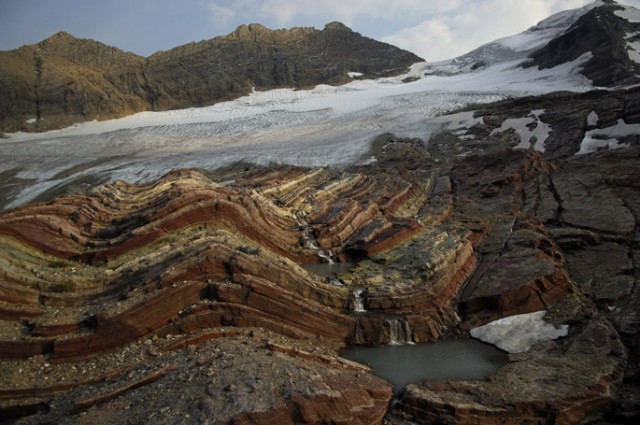 Glacial retreat of Sperry Glacier in Glacier National Park in Montana. Showing exposed bedrock. The park will be glacier-less by 2030 under present rate of increased temperatures.
Glacial retreat of Sperry Glacier in Glacier National Park in Montana. Showing exposed bedrock. The park will be glacier-less by 2030 under present rate of increased temperatures.
Grinnel Glacier. After losing 90% of its volume, the glacier may be gone in 20 years.
Columbia Glacier, Alaska
11 mile retreat of the glacier since 1984
Trimline showing the deflation of the glacier since 1984. The glacier deflated at a height equivalent to the height of the Empire State Building
Iceland
Jökulsárlón, Death of an iceberg.
Svínafellsjökull landscape crevasses
Ice diamond created by tumbling into surf and sand
Jökulsárlón Iceland. Ice diamond at night
Greenland
Ilulissat Isfjord Glacier. Rolled over icebergs metamorphosed by waves
Ilulissat Isfjord Glacier calving face measured at four miles wide. Discharges more ice into ocean than any other glacier in Northern Hemisphere
Scale of the Ilulissat Isfjord Glacier. Try to spot the helicopter.
Greenland Ice Sheet
[youtube http://www.youtube.com/watch?v=hC3VTgIPoGU?feature=player_detailpage&w=640&h=360]
Video of the largest glacier calving ever filmed. Ilulissat Isfjord Glacier
James Balog, EIS Founder and Director
Photos: James Balog
